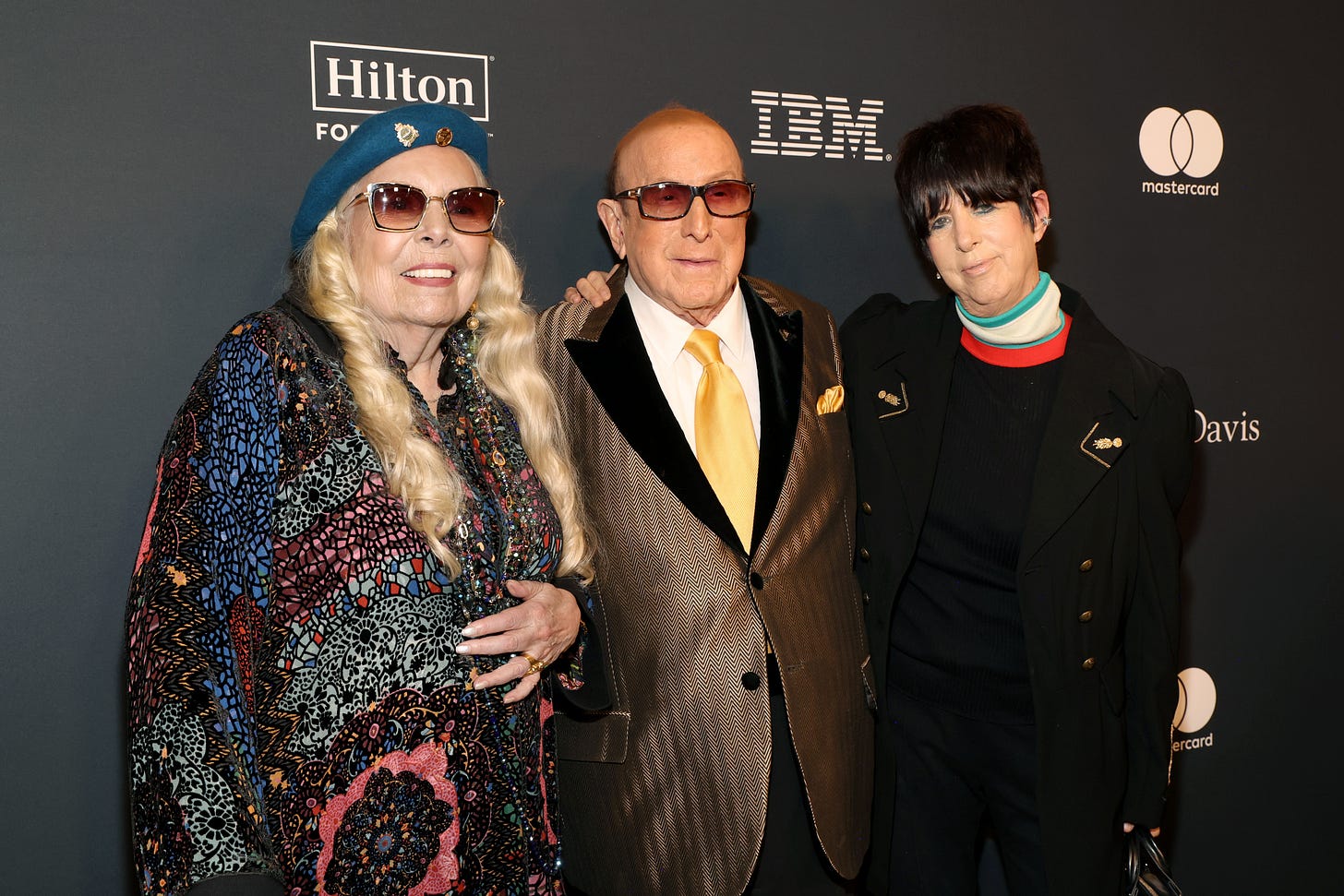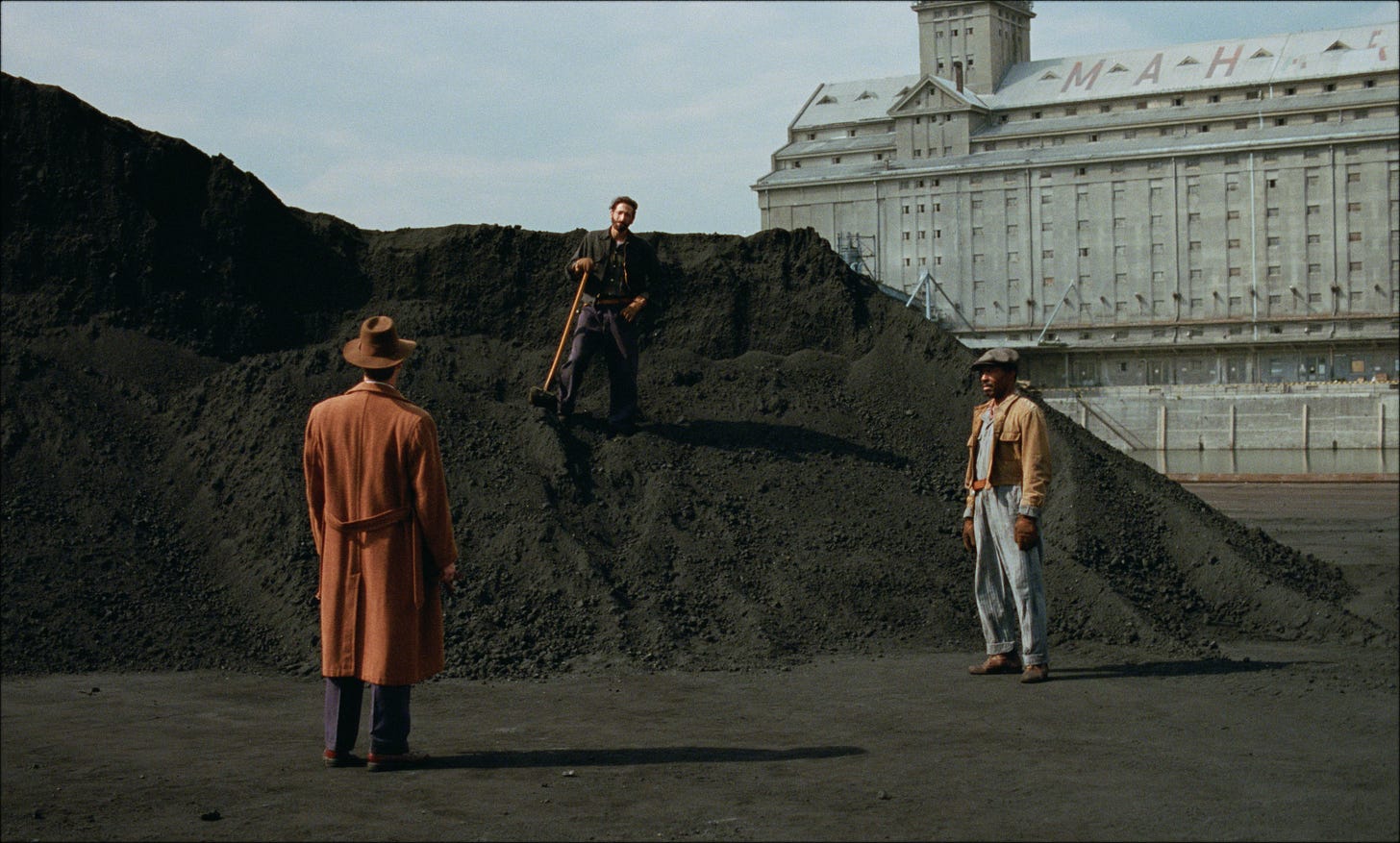What 3 Big Awards Shows Will Mean for Oscar (& 'Emilia Pérez')
I survey the field ahead of Critics Choice, DGA and PGA. Plus: The designing woman behind 'The Brutalist'

A friend who has worked on multiple awards campaigns gave me a useful piece of advice recently for how to know if an Oscar season scandal actually matters: “Worry when it hits the real news.”
The “real news,” in this case, means something outside of the entertainment trades or tweets or newsletters like this one. Because while Academy voters undoubtedly want to read the inside-baseball dish, they’re nonetheless well aware that today’s industry scandals can look like tomorrow’s tempest in a teapot.
And when it comes to voting for the Oscars, particularly best picture, having some outside perspective really matters. By coronating something as the best picture of the year, the Academy is, ideally, sending a beacon to the rest of the world about what Hollywood stands for, and what it can be at its best. Sometimes the anointed film is a hit that everyone already knows about, like Oppenheimer or Return of the King. But more often these days it’s a title that might otherwise languish in obscurity were it not for Hollywood’s best and brightest who want to hold it up and say, “Yes! This is who we are!”
So when a film that might have been a best picture winner hits the “real news” for the wrong reasons, it becomes a whole lot harder for that contender to represent the industry’s most hopeful version of itself. This has certainly been the case for Emilia Pérez this past week, which has won this year’s prize for “the Oscar movie that the most regular people in my life want to know about.” It’s been streaming on Netflix for months, but so many of my relatives and neighbors seem to have only heard about it this week — and what they’re hearing is almost universally negative.
This is, of course, pretty much inevitable when a movie’s Oscar-nominated star goes on a rogue pseudo-apology tour, stirring up the kind of irresistible drama that absolutely anyone can get invested in. Who could blame the general public for taking a break from the news in Washington to read about how Netflix is only communicating with Karla Sofía Gascón via her agent, or ponder whether best supporting actress nominee Zoe Saldaña can steer clear enough of her co-star to salvage her own campaign?
When People is picking up on the beat-by-beat of the fallout, from a French director no less, you know you’ve hit the “real news.”
How Emilia Pérez Scandal Could Open the Door for . . . Diane Warren?

As to how this will affect Emilia Pérez’s overall awards chances, what I’m hearing from inside Netflix suggests even they know best picture is no longer a real possibility. Take, for example, the recent FYC ad that does not even mention the title of the film, and puts Saldaña — still my pick to win best supporting actress — front and center.
Here’s one possible outcome I’ve been mulling over that would be a true twist. Emilia Pérez is nominated for two songs, with “El Mal” — Saldaña’s showstopper number and probably the best song in the film — widely perceived as the favorite ahead of the Selena Gomez showcase “Mi Camino.” But if the Emilia backlash is strong enough, it’s possible that neither song has enough votes (especially if they cannibalize each other), which could clear the path for none other than . . . Diane Warren. The legendary songwriter, who received an honorary Oscar in 2022, has been nominated for 16 Academy Awards over the years and never won. This year she’s nominated for a separate Netflix project, Tyler Perry’s WWII drama The Six Triple Eight, with a song performed by H.E.R. (Gabriella Sarmento Wilson). Go read my colleague Rob LeDonne’s interview with her and tell me you wouldn’t root for Warren to win at last.
This weekend, finally, we’ll get some more concrete answers, as the narrative of awards season returns back to the industry. Following Friday’s televised Critics Choice Awards, delayed twice due to the Los Angeles wildfires, Saturday’s Directors Guild and Producers Guild Awards will point us toward where awards season has landed after the chaotic past month.
At the DGA Awards, which doesn’t conclude voting until Friday, Emilia Pérez Jacques Audiard was not a likely winner anyway. It’s an American guild, after all, and in the handful of times its winner has diverged from Oscar’s pick — Ben Affleck (DGA) instead of Ang Lee (Oscar) in 2012, Rob Marshall (DGA) instead of Roman Polanski (Oscar) in 2003 — the guild has shown a preference for homegrown productions. Sean Baker (Anora) and James Mangold (A Complete Unknown) are the only DGA nominees who actually filmed their projects in the United States, though Brady Corbet’s The Brutalist, filmed in Hungary, is the contender most explicitly about America. Your guess is as good as mine where that all lands.
What’s Known and Unknown About the PGAs
At the PGA Awards, however, Netflix had reason to hope for an Emilia Pérez win, cementing the frontrunner status it earned after leading the pack with 13 Oscar nominations. It could still happen; PGA voting closed last Thursday, just as the Gascón scandal was gaining steam, and if there’s any group that understands you don’t necessarily blame an entire production for the problems of one star, it’s probably producers.
Still, even before this fracas, I’ve had a hunch that the PGA Awards might open the door to an Emilia rival, much as CODA defeated The Power of the Dog there in 2022 or Green Book solidified its lead over Roma in 2019. If an Oscar best picture winner has to build consensus, a PGA win is a good way to prove you can do it. For the record, however, my own prediction is that A Complete Unknown, the relatively old-fashioned Hollywood hit, will win at PGA and become our new default best picture frontrunner. Look, it’s possible!
One last thing about this coming weekend before I get into today’s interview. The Critics Choice Awards is the only televised show of the trio — you can watch it on E! if you don’t have Friday-night plans. Ballots for these awards were due way back on Jan. 10, as wildfire concerns in Los Angeles were near their peak. So the Critics Choice winners will be more reflective of the Oscar race of a month ago than of the current reality — the group could end up looking way out of step, or it could establish a whole bunch of new narratives.
I’ll be there in the room, and I’ll report back on Monday on what I learn. By then I’ll also have a report from the live event I hosted last night with the all-star team from Conclave — if you were there, thanks for coming! It’s not too late to request to attend our event with two co-directors from Wallace and Gromit: Vengeance Most Fowl happening this Saturday morning.
Building the World of The Brutalist

I do feel confident making one prediction about the Critics Choice Awards, though. The Brutalist’s production designer, Judy Becker — who effectively played the role of the film’s fictional brilliant architect, László Tóth, by designing the buildings we see Adrien Brody create onscreen — ought to walk away with the Critics Choice production design prize. I spoke to Becker last week about how she worked with director Brady Corbet, the magic tricks required to depict the construction of an enormous building without actually building it — and yes, the minor AI scandal around the AI she didn’t actually wind up using.
Before she was in Hungary with Corbet, painting foam to look like concrete slabs, Becker was in awe of how the former child actor had grown up. Becker was getting her start as a production designer in the mid-2000s when Corbet was a teenager taking roles in auteur-driven indies like Mysterious Skin and Thirteen.
Sitting down to watch Corbet’s debut feature, The Childhood of a Leader, in 2015, Becker remembers thinking, “Wow, that kid directed this movie!” When she finally sat down with Corbet, after requesting a meeting with him via her agent, it wasn’t just his filmmaking skill that impressed her. “Brady has spent his whole life working in film, and obviously he’s very observant, because he became a great director and talented,” she says. “I’ve never heard a director as knowledgeable about every facet of the world-making process. He knows production terminology I’ve never heard before.”

For The Brutalist, Becker didn’t just have to design the Institute at the center of the film, a project commissioned by Guy Pearce’s conniving millionaire. She had to build a model — very similar to the one we see Brody show off for approval in the film — to convince the film’s producers it was even possible. Becker’s model wasn’t just an essential guide for finding locations in Hungary that could reasonably stand in for the Institute, but sometimes — using one of the oldest tricks in the Hollywood handbook — became the Institute itself.
“It was a big dollhouse,” as Becker puts it. “It was a very old fashioned way to do things, and I loved it.” During prep, Corbet showed Becker and Lol Crawley, the film’s Oscar-nominated cinematographer, a photo from the set of the original Star Wars. “There’s three guys in the desert, and maybe 20 feet away there’s this little model of a spaceship. They’re all crouched down around the camera. We were looking at it like, ‘That’d be cool. Let’s do that with the institute.’”
Becker, who previously has worked on films including Battle of the Sexes, Carol and Silver Linings Playbook, is also willing to embrace new technology, which is how her work got caught up in the talk around The Brutalist’s use of AI a few weeks ago. In a 2022 interview with Filmmaker Magazine, given before production on The Brutalist even began, Becker said she was considering using Midjourney’s generative AI to help design some of the buildings that are supposed to represent László Tóth’s other work.
By the time production began in Budapest, there was no one locally with the AI program to make it happen, “so the point was moot,” Becker says. “I wish that people understood that that was before we even started production. I didn’t use it.”
As a longtime fan of Brutalist architecture, and someone who’s inevitably influenced by the world around her, Becker says she was careful throughout production to make sure the designs were entirely her own. It was only later that she recognized some of the subconscious influences that came from entirely unexpected places.
“I was walking through LAX terminal 5 a few weeks ago, and I looked up at the ceiling and I'm like, ‘Oh God, did I use that ceiling as a reference for the ceiling of the library?’ Terminal 5 is so awful. I hate it there. But was I influenced by that?”






